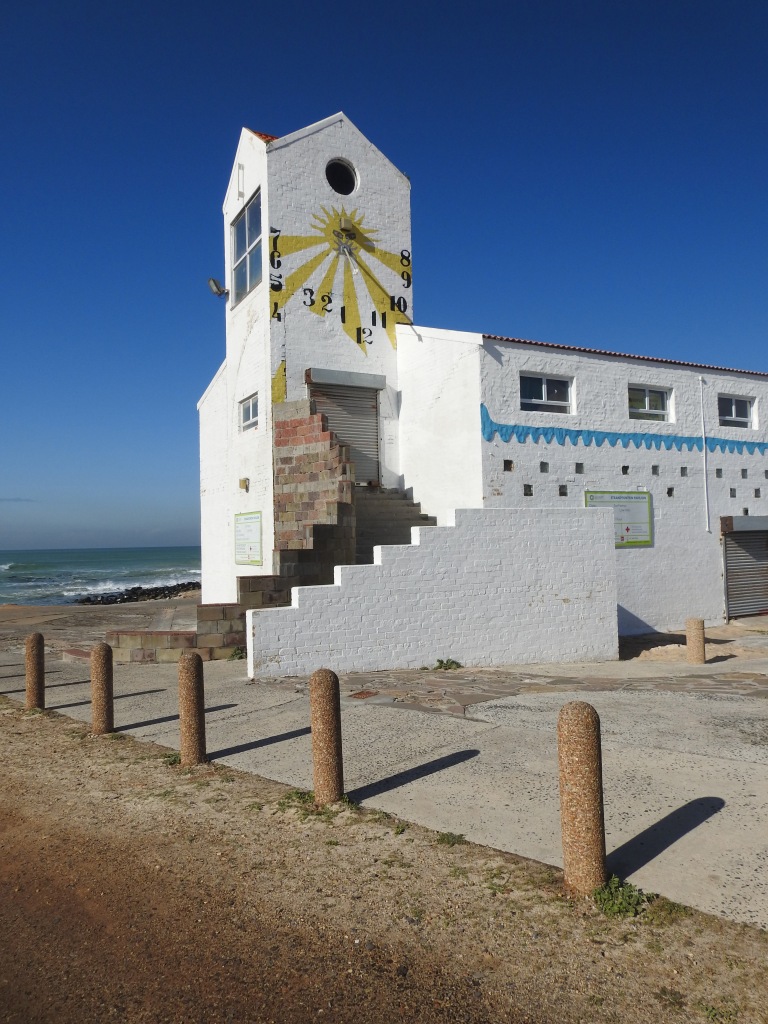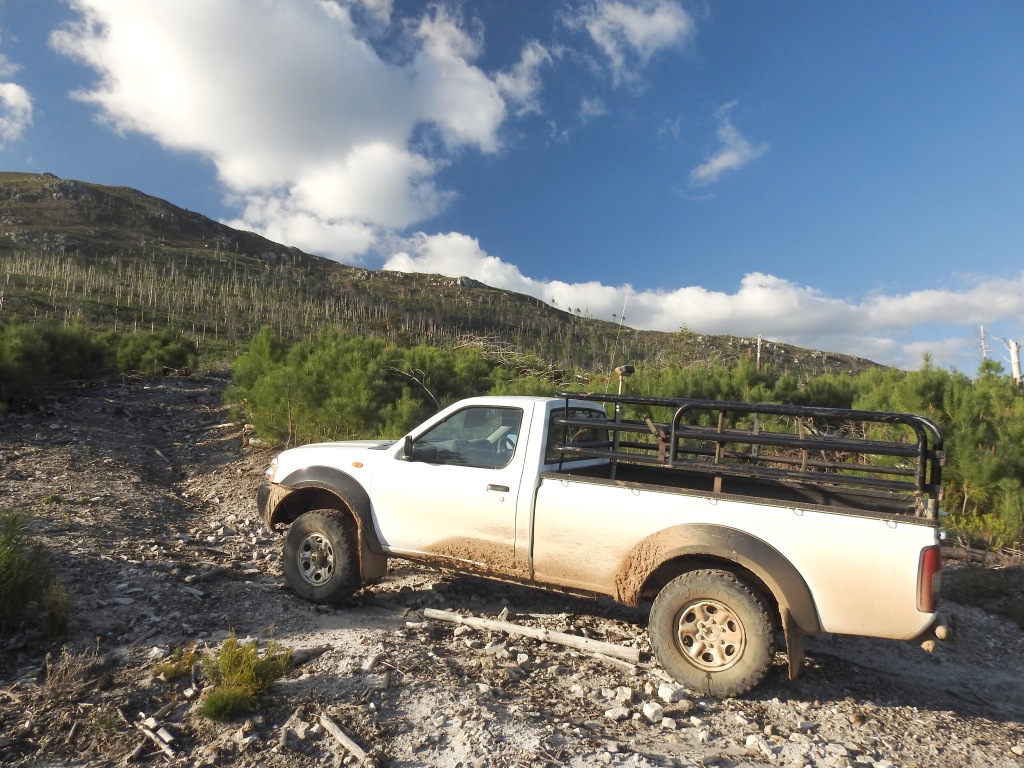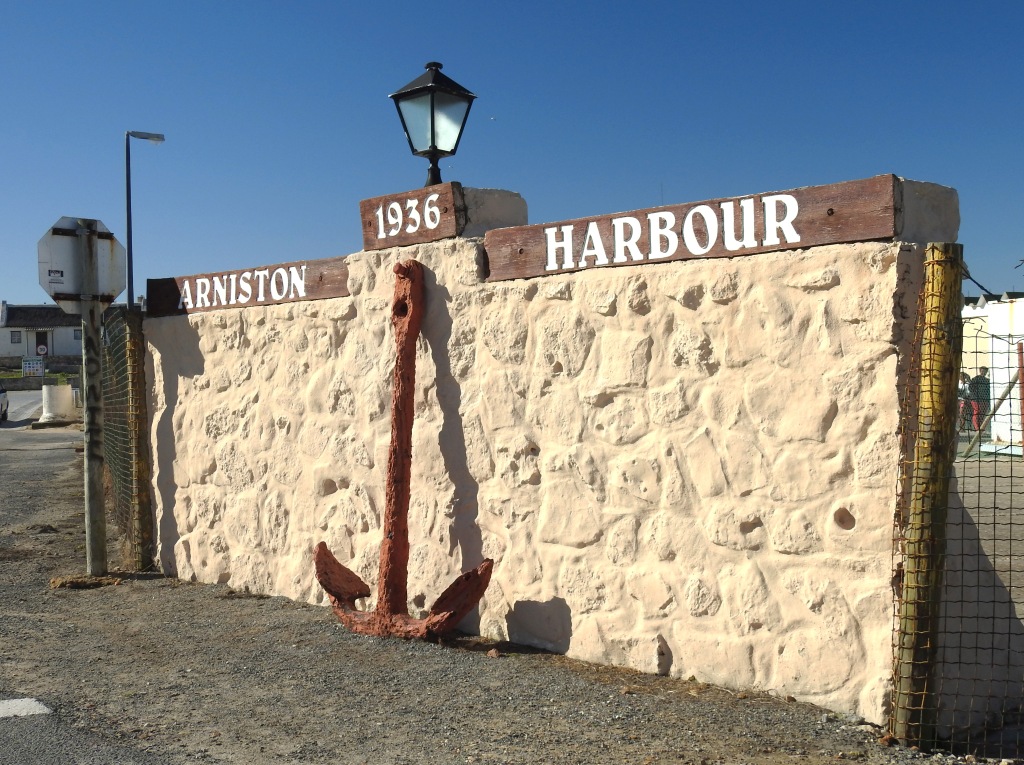Day 28 31/08/2017 Cape Town to Stillbaai
Today we head north along the coastal road, departing Cape Town at 8:45 on a fairly clear day with a bit of light mist lingering.
Driving through Hout Bay we made our way through Somerset, Muizenberg, Strandfontein, Rookies, Pringle Bay, Betty’s Bay, Kleinmond, Hermanus and Stanford.

Muizenberg Beach

I cannot remember the name of this beach maybe someone will recognise it and let me know


Strandfontein beach front

View of the ocean from a different perspective

Interesting building at Strandfontein beach
We got a little off track looking for the Danger Point Lighthouse which we eventually found. It is situated on the southern point of Walker Bay, near Gansbaai. It was built in 1895 and stands at 17 meters high.

Danger Point Lighthouse


Beautiful aloe growing on the rocky outcrop near the car park
We traveled back to Stanford to the intersection R316. Here I phoned Lampie, a distant relative I had never met before. We had been corresponding over a year about our mutual interest in the Fick family genealogy.
When Lampie heard I was coming to Cape Town on a tour, he insisted we stay with him. Lampie directed us to our meeting point at the gate entrance to his farm in Clocolan. Clocolan is a small town in the Free State Province.
The Free State is where my father was born in the Ficksburg district.

Our first glimpse of Caledon
Lampie was waiting for us and after brief introductions we followed him in his bakkie (ute) to the farm house, a fair distance from the main road. After a wonderful welcome and introduction to his wife, Doekie we all piled onto the back of the farm bakkie (ute).
Doekie rode in the front with the driver.

Lampie’s bakkie
The first attempt up the mountain failed so we had to backtrack and take another route so that we could get a birds eye view of the canola and cereal fields. The farm is situated in a very picturesque area. The rich soil yields incredible canola and cereal crops.
The bright yellow canola carpeted the valley as far as the eye could see. It was a breathtaking vista.

Canola as far as the eye could see
On the way back Lampie wanted to take us to see an oak grove that has been converted into a wedding venue by a young couple who got permission to marry there and decided to make it into a venue called die Woud (the Wood).

There was a lovely see through Marquis erected in the middle of the grove with see through furniture sparkling in the afternoon glow. The sun poured through the side awnings casting a magical light throughout.

The reception Marquis

They also made an open air church and erected a small gazebo for the ceremony, all nestled under the oak trees. The grove radiated a sense of mystical magic.
By now it was starting to get late and the sun was setting fast. We made our way back to the large farm house. Doekie kindly gave me a tour of their lovely artworks, some of which was done by Doekie and her mother.
That night the maid cooked us a wonderful dinner of sausages, ostrich, chicken and a sweet and sour casserole accompanied by green beans, carrots and mashed potato. David insisted on helping Lampie cook the sausages on an internal barbecue.
After dinner milk tart drizzled with honey was served by the fireside. We settled into a very relaxed evening as we all got to know each other. Sharing our family histories and generally reminiscing about our families and past events in history.
I fell into bed at about 9:45 absolutely exhausted, falling asleep almost immediately. David apparently did a bit of reading before retiring and sleep took over.
Day 29 1/09/2017
The next morning we were served a fabulous breakfast of cereal, fruit, paw paw, yogurt, toast and jam. When Lampie heard our next stop was to be Cape L’Agulhas he and Doekie decided to come too. So off we went in two cars.
David wanted to dip his toes into two oceans at the Southernmost tip of Africa.
On the way, Lampie pointed out P.K. Van Der Byl’s farm. Pieter Kenyon Fleming-Voltelyn van der Byl was a Rhodesian politician who served as his country’s Foreign Minister from 1974 to 1979. I often heard my father talking about him.
We made a brief stop at another farm belonging to another Fick family branch, from the Napier region, to view the old family cemetery. The land has been owned by 8 generations of Fick’s since 1798.
Due to my interest in genealogy this was a must for me and something I didn’t expect so it was an added bonus. Standing in the old cemetery looking at all the headstones of previous generations, some of the founding fathers, I was overcome with emotion.

From the farm in Caledon we traveled through to Napier to Bredadorp and onto Cape L’Agulhas.

On arrival at Cape L’Agulhas we all took a stroll along the boardwalk which took us to the southernmost tip. David rushed toward the ocean, sidestepping the rocks where he indeed dipped his toes into the somewhat chilly ocean.

The boardwalk

It was starting to get hot so we made our way back to a sweet cottage style cafe situated in close proximity to the Lighthouse where David very kindly treated us all to lunch. David had calamari and we all had hake fish & chips.
It was a delicious lunch prepared by the most charming and friendly owner.

Cape L’Agulhas Lighthouse established in 1849
Lampie and Doekie departed shortly afterwards at about 2:30 heading home to Caledon. We drove back to Bredasdorp, turned R to Waenhuiskrans, and then on to Anniston.
Arniston is famous for its 120 year old fishing village. Arniston was named after an east Indiaman ship that wrecked on the shore on the 30th May 1815. Only six people on board survived with a loss of 372 lives.
After we parked the car we walked among the famous Arniston cottages and met and engaged in conversation with a lovely elderly fisherman who told us he was 98 years old and had been living there since the cottages were built.

The 98 year old local man sitting in his garden in the front of his cottage
Visiting this place had always been on my bucket list so I was delighted to be here and see what remains of the old fisherman cottages.

Kaasie’s Baai Guest House and B&B

One of the charming original cottages

Willeen’s Arts & Craft

Entrance to the Arniston harbour established 1936
Just before leaving we were lucky enough to watch the local fisherman returning with their catch. They brought in Red StumpNose, Shark and Red Roman. It was a hive of activity as they removed the fish and immediately started preparing them.

Arriving with the days catch

Local fisherman with his catch of the day

A hive of activity
In the background of the photo above you can see all the new development in this area. A stark contrast to the original cottages. South Africa is a country of great wealth alongside appalling poverty.

I had to take a photo of this boat with the same name as my grand-daughter
We left Arniston at 4:30 and drove back to Bredasdorp and then on the N2 to Swellendam, 220 km from Cape Town. It is the 5th oldest town in South Africa. A beautiful place surrounded by a spectacular mountain range.
From there we drove through Heidelberg, Riversvadale and finally arrived at 6pm at our next stop, a B&B called Aitsa, in the charming Stillbaai seaside village. It was a long trip and we were late for check in and no one was around. We phoned the owner who was out to dinner.
She very kindly left her dinner to come and give us our key to get into our very pleasant accommodation.
After unpacking the car we headed off to do some exploring. We spent the evening driving North and South of the lagoon. There were lots of upmarket holiday type homes scattered alongside.

We spent the evening driving North and South of the lagoon. There were lots of upmarket holiday type homes scattered alongside. We found a small shopping center, but unfortunately everything was closed. We located the small yacht harbour and took a short walk on the beach.

There were 4 beaches, the Goukou River, Mossel Bay museum, remnants of Ancient fish traps. Early cave dwellers noticed that fish got caught in the natural tidal pools as the tides receded. Most of these traps are half moon shaped and vary in size.
After driving a short distance through the wilderness it soon became too dark to see anything so we headed back to our accommodation. Our dinner was the leftover fish and salad from my lunch at L’Agulhas. By now the salad was a bit soggy.
We had to make do as we had nothing else except rusks.
I fell into bed at 9:40 pretty exhausted by the day’s events.


Some of the Images are like Wallpaper 🙂 great !
LikeLiked by 1 person